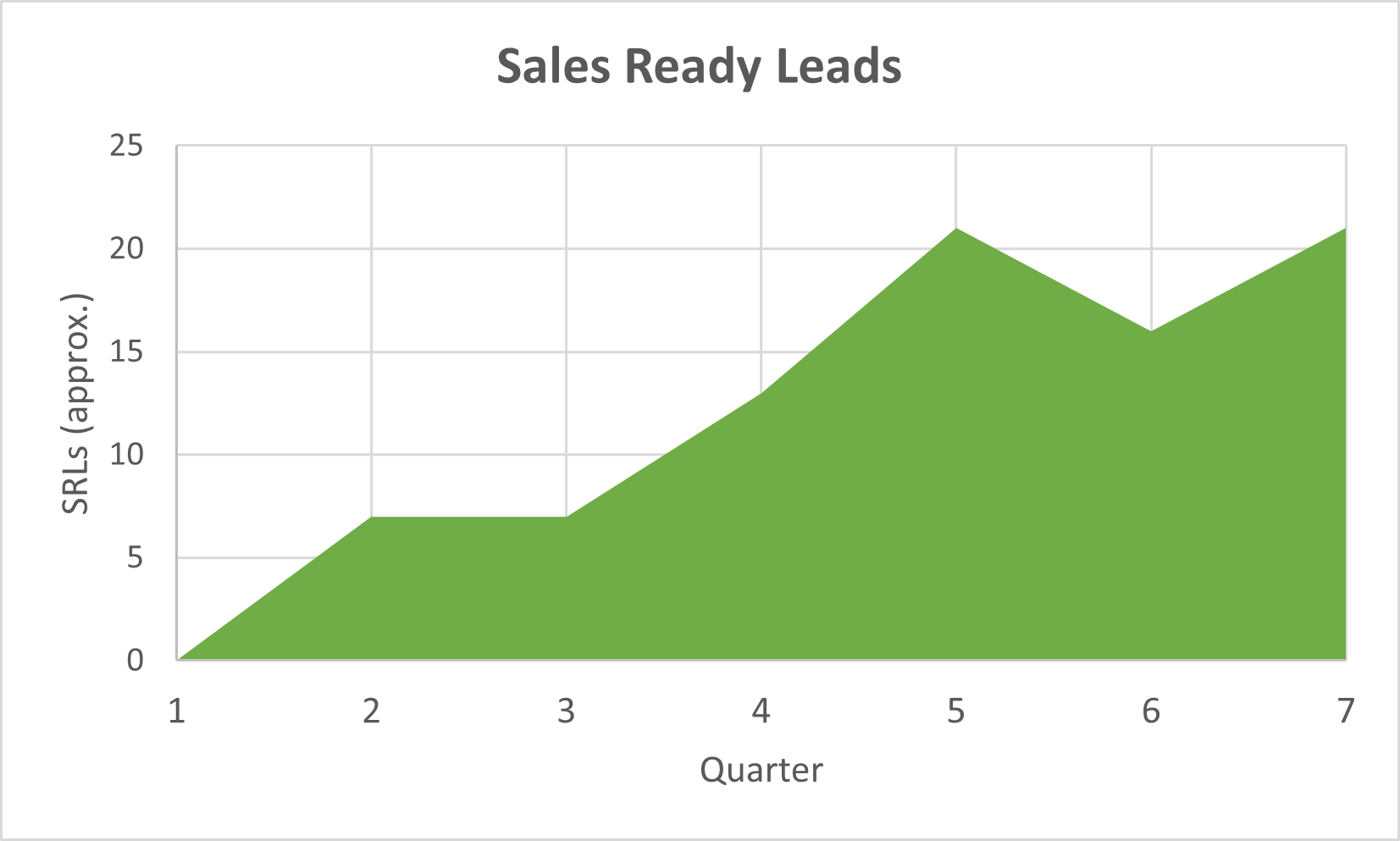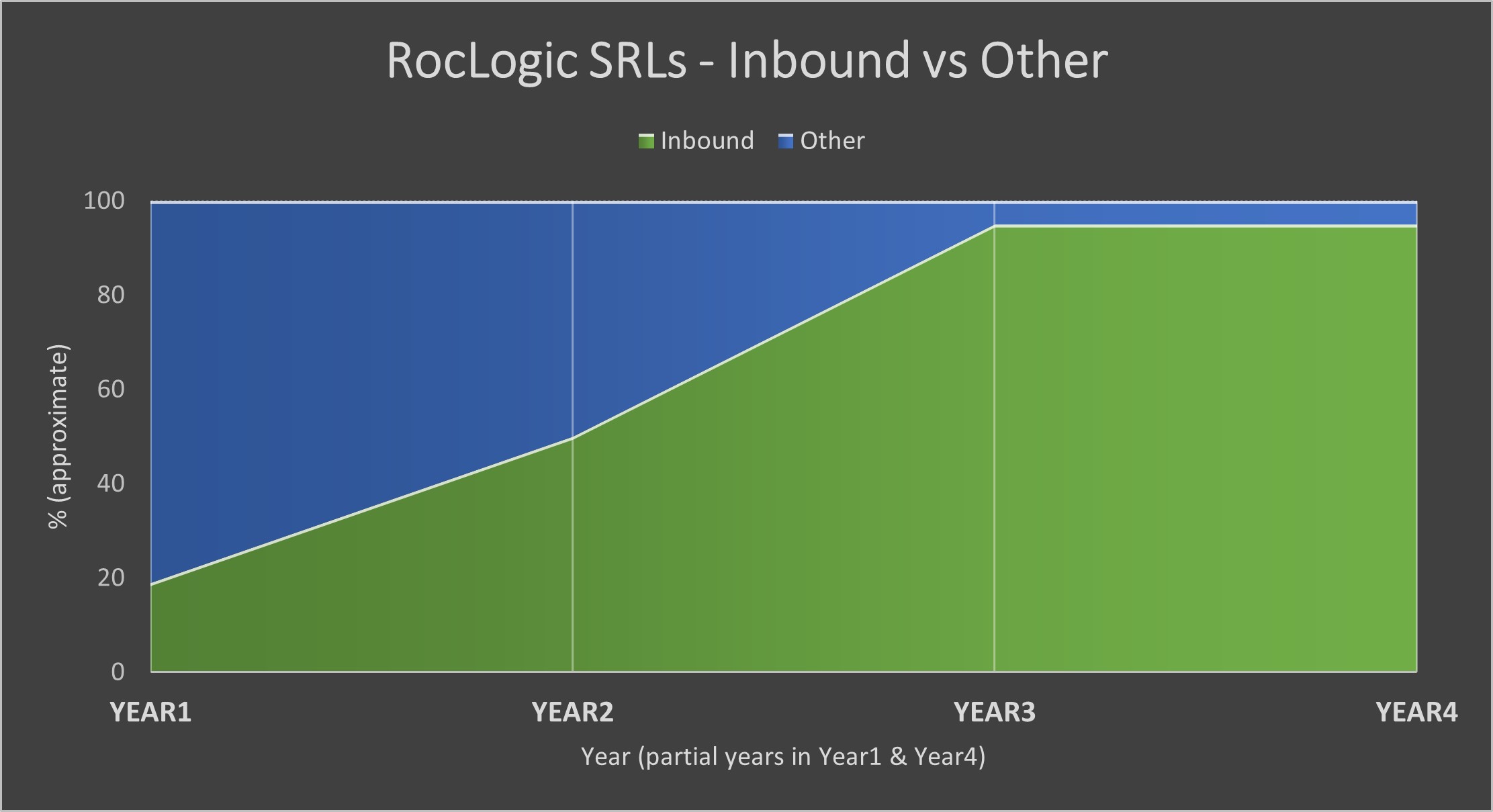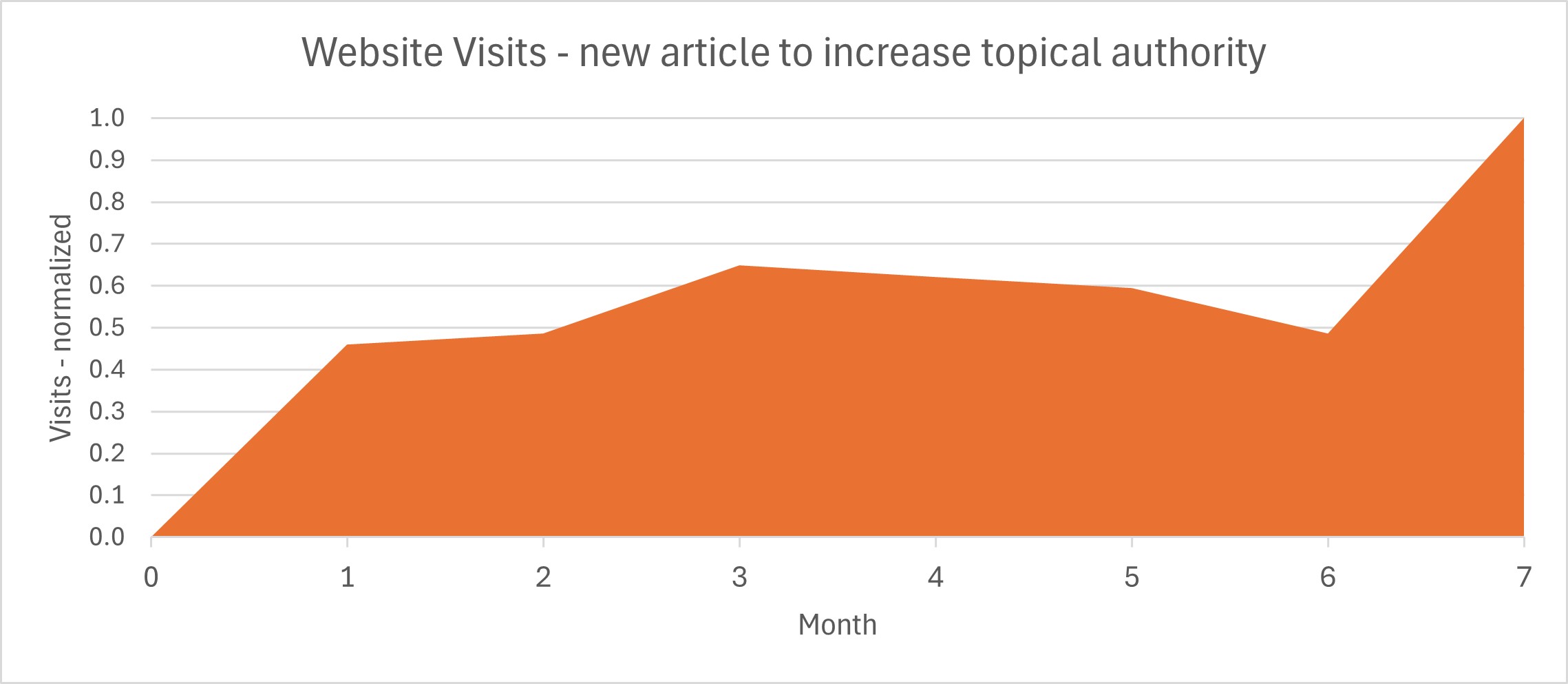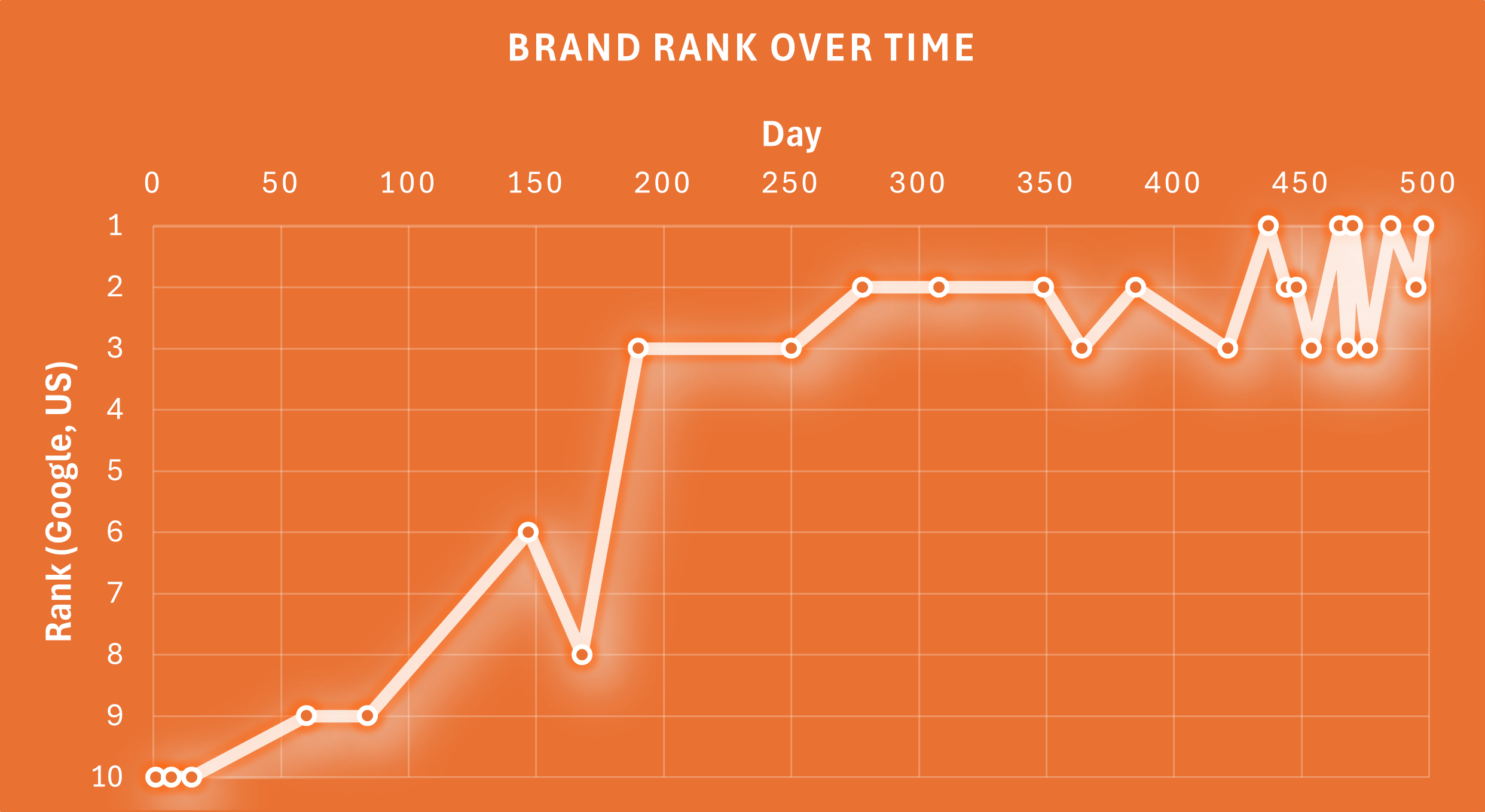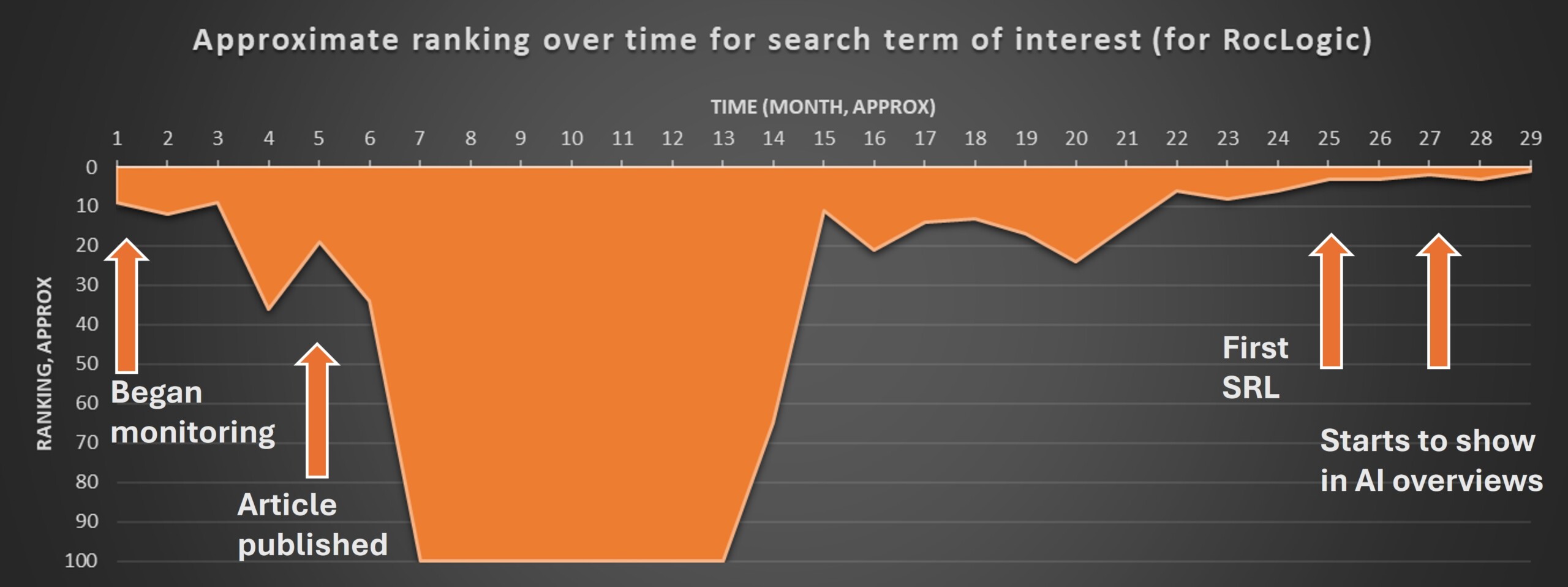How to market a B2B service
Business services marketing strategy tips for smaller companies
(<100 employees)
Last updated: June 6th, 2025

Marketing a service is different than marketing products. Why?
Because with a product you’re leveraging trust that’s built into the product being sold.
With a service, you’re selling something that doesn’t exist yet. Therefore, your strategy needs to focus more on building that trust.
Marketing in the B2B world is different than the B2C world. Why?
Mainly because the price tag is often significantly larger in a B2B context. That means the sales process:
- is longer,
- involves more people,
- and requires more trust.
This article won’t cover everything involved in marketing a business service. Instead, we’ll focus on some of the more important elements you’ll want to pay attention to.
Keep your marketing strategy super simple
Here’s a simple framework to think about marketing your B2B services. This should be your north star. Any time you’re feeling lost, use this to re-orient yourself.
For each type of problem you solve, you need to be able to work through these 4 questions:
- What problem am I solving?
- For whom?
- How do I engage them?
- Where do I stand in the market?
This may be one of the simplest B2B marketing strategy frameworks you’ll come across. There’s a lot packed into each question. Your answers should help you align with the market with messaging / positioning, identify your target audience, and think through marketing channels.
Get hyper empathetic
You almost can’t have too much empathy when trying to sell your service. You need to home in on the most important things your customers need to get their job done. That’s where your marketing should start. Who are you talking to? Decision makers? Influencers? Both? What do they care most about?
It’s way easier to talk about yourself and your services from your perspective. However, your customers don’t care. They’ve got a job to do. You need to focus your messaging around how you can help them.
Make it more real with content and proof points
You’re selling something that doesn’t exist yet (a service that you’ll perform), and even when you do perform it, it’s often not as tangible as a product. So what do you do about this reality?
Two things:
- Give away some of your brain power with informational / educational content
- Share proof points
Educational content could include articles, videos, images, white papers, or audio that teach something. It needs to be content that’s relevant for your potential customers. You’re essentially showing people that you know what you’re talking about on a particular topic by teaching them about it.
Proof points include case studies, testimonials, reviews, and metrics.
Narrow your focus – find your niche(s)
Breadth and philosophical abstraction are great for summer evening chats around the fire.
However, it dilutes interest for most business-related topics.
The more generalized you are, the higher your risk of being commoditized and blending in with the crowd.
An example of narrowing your focus, from worse, to better:
How to market your business => How to market a B2B business => How to market a B2B services business => Marketing strategy for custom software development services companies.
You need to add clarity, which means you don’t want to tell your potential customers that “you do everything”.
You need to select a small number of problems you solve that you care most about and add the most value.
That doesn’t mean that you can’t help existing customers with additional services, but you need to start narrower than you’ll want to. You need to know your sweet spot. Hint: it’s not the generic service you offer. You want to try to find the aspects of what you do that put you into smaller groups.
See this article on why you need a niche and what to do about it for more detail.
Build trust through transparency
B2B companies often want to skirt around the main questions that potential customers have. Consider taking the opposite approach and be direct. Potential customers usually have questions around things like:
- Prices
- Schedule/timeframe
- How you can and can’t help
- When you’re not a good fit
- What you need from them
- What the process looks like to work with you
Of course there are other questions potential clients ask as well depending on what stage they’re at in their journey. Capture those and consider answering them on your website.
Consider Customer Experience / Client Experience as a differentiator
Customer experience touches every aspect of interaction, including:
- the sales process,
- website visits,
- decision complexity,
- customer support interactions,
- meeting logistics,
- and of course service execution interactions.
The reality is that some things are just hard or aren’t very enjoyable. That’s fine. You’re not trying to turn everything into playtime. You just want to make sure you’re always keeping a pulse on what could be better (i.e. continuous improvement of the customer experience).
Take a look at every touch point along the buyer’s journey and think about where you could do better. Some questions to ask yourself and keep a pulse on:
- In what ways do your customers dislike interacting with you?
- If you were them, what aspects of interacting with your business would you not like?
- Are there ways to make the experience more palatable?
- Are there ways to eliminate some of it?
- Are there ways to simplify or add clarity?
- Are there ways to make the most important aspects of the experience enjoyable?
Digital marketing strategy – Selecting marketing methods
Notice I said methods, not method. You’ll likely want to play with ~2-3 methods at any point in time: one primary and one or two secondary.
At the highest level, you’ve got digital marketing methods and traditional marketing methods. At this point I think the vast majority of B2B services businesses should have a digital-first strategy, with your website as the core of your online presence.
That’s not to say that you can’t get value out of trade shows, direct mail, and networking, I just wouldn’t start there in most cases.
Other traditional marketing channels to consider are referral marketing and partner channel marketing. Both worth consideration as part of your marketing efforts, but highly dependent upon the specifics of your business.
When it comes to digital marketing for B2B services, one of the main challenges is that there are too many options. At a high level you’ve got:
- Inbound
- Outbound
- Content
- SEO (Search Engine Optimization)
- SEM (Search Engine Marketing) / paid search (e.g. Google Ads)
- Social media channels (e.g. LinkedIn)
- Account-based marketing / account-based engagement
Let’s try to add some clarity to this.
Inbound and outbound are marketing philosophies as much as anything.
With outbound marketing you actively reach out and try to engage people whether they’re interested in that moment or not. On the plus side you can try to engage people that aren’t necessarily looking for your services. On the down side, you run a higher risk of annoying people and you’re asynchronous to their needs.
Inbound is essentially the opposite. Inbound seeks to position your company well in advance so that when a potential customer has a need, you’re there to help them with whatever that need is (whether it’s offering up one of your services, or teaching them about something they want to learn about).
See inbound marketing vs outbound marketing for B2B services for more.
Content marketing is fundamental to the vast majority of digital marketing, so you’ll likely be utilizing this. The challenge with content marketing though is that it’s not a complete solution by itself. See the pros and cons of content marketing for B2B services for more.
Check out how to get started with digital marketing for more info on Inbound, Outbound, Content marketing, SEO, SEM, Social media marketing, email marketing, and account-based engagement.
Selecting a primary and 1-2 secondary methods depends on several factors specific to your business, such as:
- Your company culture
- How your audience likes to receive information
- Whether or not your potential customers are actively looking for help
- Your org structure
- The sophistication of your sales team
- Your price structure
Digital marketing method selection is an experimental exploration process. You might start with one focus, and evolve as you learn from the market. Check out
The problem with marketing plans for small B2B companies, and what to do instead for more on this.
If you’re interested in inbound, content, or search marketing and want help, feel free to reach out for a chat.
B2B Services Marketing Examples – Case Studies
In learning mode? Check these out:
- Pros and cons of inbound marketing
- Marketing for engineering consultants – tips and insights
- Marketing for custom software development services companies
- Inbound marketing readiness – self-assessment
- Good and bad reasons to overhaul your website
- Content marketing for engineering companies
- How to get started with digital marketing
- The pitfalls of a growth goal as a business strategy
- Inbound marketing vs outbound marketing – for B2B services
- Navigating digital marketing efforts
- Want better sales-ready leads?
- Pros and cons of content marketing
- Marketing strategy for launching a new service
- How to align sales and marketing
- Assessing the health of a B2B services business
- Inbound marketing for software development companies

